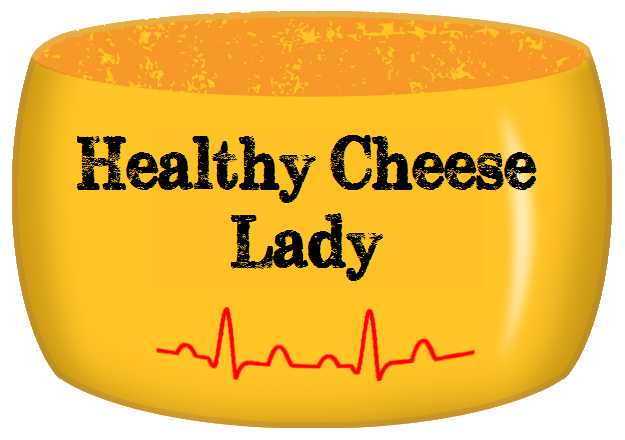If you’re confused about the relationship between nutrition and inflammation, you’re not alone. At the biochemical level, it’s complicated. This is my attempt to make it readable for non-scientists. At the end, I’ll discuss the potential benefits of including high-quality cheese in your diet. After all…this is a cheese blog!
By now, you have heard that the most dangerous dietary nutrient related to heart disease is sugar, not fat. Did you know that sugar intake is also linked to modern degenerative diseases? Here’s a partial list:
- Cancer
- Hypertension
- Fatty Liver Disease
- Macular Degeneration
- Osteoarthritis
- Osteoporosis
- Heart Disease
- Obesity
- Diabetes (Type 2)
- Alzheimer’s
- Neurodegenerative diseases
- Chronic lower respiratory disease
- Influenza
- Pneumonia
- Autoimmune diseases
- Asthma
- Kidney disease
- Stroke
1) What’s the difference between acute and chronic inflammation?
There’s a lot of chatter on the internet about the dangers of chronic inflammation. So what is it? Why is it dangerous? First, let’s define the two general types of inflammation:
A.) Acute inflammation starts rapidly and can quickly become severe. It’s a local response to injury marked by classical signs of heat, redness, swelling, and pain. Symptoms are only present for a few days, but in some cases may persist for a few weeks. Example, a cut on your finger, a bee sting, or a puncture wound.
B.) Chronic inflammation refers to a prolonged inflammatory response that involves a progressive change in the type of cells present at the site of inflammation. It is characterized by the simultaneous destruction and repair of the tissue from the inflammatory process. It can follow an acute form of inflammation or be a prolonged low-grade form. (1) This process can last for years. Remember that inflammation is the body’s first protective response to a perceived threat.
2) Facts about sugar
Sugar is everywhere! There are at least 61 different names for sugar listed on food labels. (2) You’ll recognize these common names: table sugar, high-fructose corn syrup, and honey. Although you may be intentionally avoiding sugars, keep in mind that manufacturers add sugar to 74% of packaged foods sold in supermarkets. (3) Sugar is often added to bread, sauces, and crackers. Food manufactures try to “hide” the added sugar with tricky names.
How much sugar do we need per day? Ask the American Heart Association and they will say six teaspoons for women (25 grams), and nine (38 grams) for men. The Ketogenic followers will simply say “none.” Unlike the FDA’s recommendations for salt and cholesterol, there isn’t a specific amount of sugar recommended in the American diet. We all know one thing: We’re consuming too much.
How much do we consume?. The average American consumes 19.5 teaspoons (82 grams) every day. That translates into about 66 pounds of added sugar consumed each year, per person. (4)
For soda drinkers, it adds up pretty fast. With as many as eleven teaspoons (46.2 grams) of added sugar in one 12 oz soda, a single serving is close to double most people’s daily sugar allowance. According to Sugar Science: The Unsweetened Truth website, the sugar in one 12-oz soda equals the same amount found in one orange, plus sixteen strawberries, plus two plums. (5)
For yogurt lovers, a leading brand of yogurt contains seven teaspoons (29 grams) of total sugars in a single serving,. Most of it is an added ingredient. I’m a big fan of unsweetened yogurt and eschew yogurt with added sweeteners or fruit.
3) How does sugar cause inflammation?
- A) The first type of cells that are affected are the fat ones. The fatter we get, the more inflammation develops. Fat cells are loaded with chemicals called cytokines that constantly contribute to the inflammation process.
- B) High sugar intake causes weight gain. Overall cellular function is disrupted and stressed, causing an imbalance of the body’s natural physiology.
- C) High sugar consumption coupled with high levels of insulin can damage the artery walls. This is the start of heart disease. When normal cellular processes are disrupted with high sugar and elevated insulin levels, a number bad things happen: 1) Small tears begin to damage the lining of the arteries 2) The body responds by sending inflammatory cytokines to the artery walls. As the damage to the arteries continues, the bad cholesterol called LDL become trapped in the inflamed areas. Note that the small, dense LDL particles are harmful to the arteries…not the light, fluffy LDL particles, which are considered to have a neutral effect. And please don’t forget that HDL cholesterol isn’t harmful.
- D) As more of the small, dense LDL particles become trapped, inflammation continues to increases and promotes the build-up of plaque, which eventually narrows the arteries. If the blockage is severe, the result is a heart attack. Doctors call it myocardial infarction. Another medical term for this process is atherosclerosis. Blockage of arteries doesn’t happen overnight; it takes months or years to develop.
- E) I like the way Chris Kresser explains the dangers of inflammation. “When the lining of the artery is damaged, white blood cells flock to the site, resulting in inflammation. Inflammation not only further damages the artery walls, leaving them stiffer and more prone to plaque buildup, but it also makes any plaque that’s already there more fragile and more likely to burst.” (6)
- F) Research published in 2014: Compared with those who consumed approximately 8.0% of calories from added sugar, participants who consumed approximately 17% to 21% (Q4) of calories from added sugar had a 38% higher risk of CVD mortality…as in dead. (7)
To get a visual image of the process, see the graphic below:
4) NOW LET’S TALK ABOUT CHEESE!
When you look at cheese from a nutritional standpoint, the first thing that comes to mind is fat. Next comes cholesterol. Then salt. And maybe calories. So right off the bat, cheese is viewed as “bad” or unhealthy—especially for the heart. Cheese professionals don’t see cheese like the rest of us. Ask any cheesemaker, and you’ll hear the opposite.
I like this quote from Scientific American published 106 years ago: April 1, 1911.)
“Cheese can no longer be discriminated against because of a suspicion that it is not a healthful food.”
How much sugar does cheese contain? Let’s look at four delicious cheeses made in America, starting with Humboldt Fog (8). Let’s take a look at the nutritional values for 1 oz of each.
#1) HUMBOLDT FOGCompany: Cypress Grove
|
|
|
|
 |
#2) SMOKED GOUDACompany: Brazos Valley Cheese
|
|
| The nutrition facts seen here represent gouda-style cheeses and are NOT specific to Brazos Valley’s Smoked Gouda. Source for the following table: www.fatsecret.com  |
|
#3) WHOLE MILK MOZZARELLACompany: The Mozzarella Company
|
|
|
|
The Mozzarella Company’s nutritional profile is similar to the standard list. Protein=5.6 gm Fat=6.8 gm Carbohydrate=1 gm Sodium=70 mg Calories=87 *** Source for the following table: www.fatsecretes.com  |
#4) AU NATURELCompany: Haute Goat Creamery
|
|
| Nutrition Facts:
Calories=82 Total fat=6 grams Cholesterol=18 mg Sodium=120 mg Total Carbohydrate=0 gm Sugar=0 gm Protein=4 gm Vitamin A= 8% Calcium=8% Iron=2% Vitamin C=0% |
|
As you can see, these cheeses contain no sugar!
What a great addition to your daily food intake! There are a few cheeses that contain carbohydrates. One ounce of Brunost contains twelve grams of carbohydrates. According to CooksInfo.com, one ounce contains seven grams of sugar. (10). In Norway, Brunost is commonly divided into two types: those that contain only cow’s cream and/or milk, and the ones that contain some proportion of goat’s milk. The latter type is commonly called Geitost or Gjetost, meaning “goat’s cheese.” (9) I’ve been told that Brunost is a favorite snack among Nordic skiers.
***
5) Conclusion: Dr. Jason Fung, author of THE OBESITY CODE wrote:
“So, we’ve been drinking low fat milk and choking down low fat cheese, all with the delusion that this will improve our health. We replaced butter with margarine – truly a heinous crime against good taste. We reduced saturated fats, but the wrong kinds. All those odd-chain length SFAs were not harmful at all. All saturated fatty acids are not the same. We should have been eating high-fat dairy, not low fat dairy. We should have enjoyed our cream in our coffee instead of skim milk. We should have eaten the triple cream brie cheese. And man, oh man, we should have eaten the butter.”
Well, Dr. Fung, I agree! The potential health benefits of consuming high-quality cheese/yogurt is enormous. This blog will continue to provide valuable, meaningful, and important information, with the main focus on disease prevention. Since 80 percent of chronic diseases are preventable, we have more control over our health destination than we realize. It’s a matter of taking time to set one simple goal. As a health coach, I encourage readers to set an achievable and reasonable nutrition-related goal each week. Consider starting by substituting cheese for a sugary food. Just one or two ounces of high-quality cheese will make a difference.
6) References
- Nature.com
- http://sugarscience.ucsf.edu
- Ng, S.W., Slining, M.M., & Popkin, B.M.(2012). Use of caloric and noncaloric sweeteners in US consumer packaged foods, 2005-2009. Journal of the Academy of Nutrition and Dietetics , 112(11), 1828-1834.e1821-1826.
- https://www.ers.usda.gov/data-products/sugar-and-sweeteners-yearbook-tables.aspx
- http://sugarscience.ucsf.edu “Hidden in plain sight”
- https://chriskresser.com/inflammation-worsens-danger-of-heart-disease/
- http://jamanetwork.com/journals/jamainternalmedicine/fullarticle/1819573
Yang Q, Zhang Z, Gregg EW, Flanders WD, Merritt R, Hu FB. Added Sugar Intake and Cardiovascular Diseases Mortality Among US Adults. JAMA Intern Med.2014;174(4):516–524. doi:10.1001/jamainternmed.2013.13563 - http://www.cypressgrovecheese.com/cheese/soft-ripened-cheeses/humboldt-fog-grande.html
- https://en.wikipedia.org/wiki/Brunost
- http://www.cooksinfo.com/brunost-cheese
Send comments to babshealthcoach (at) gmail dot com
Copyright: Babs Hogan 2017











